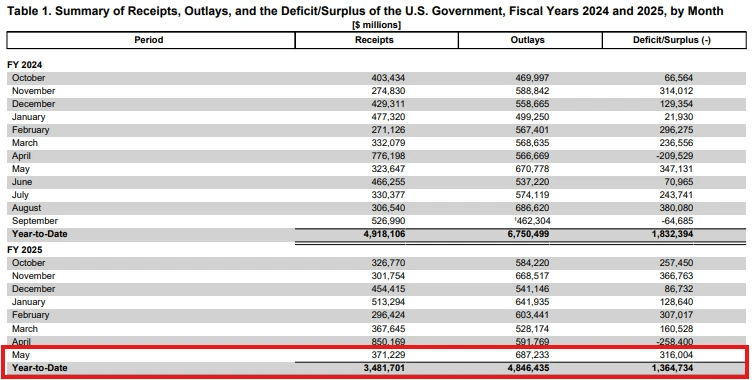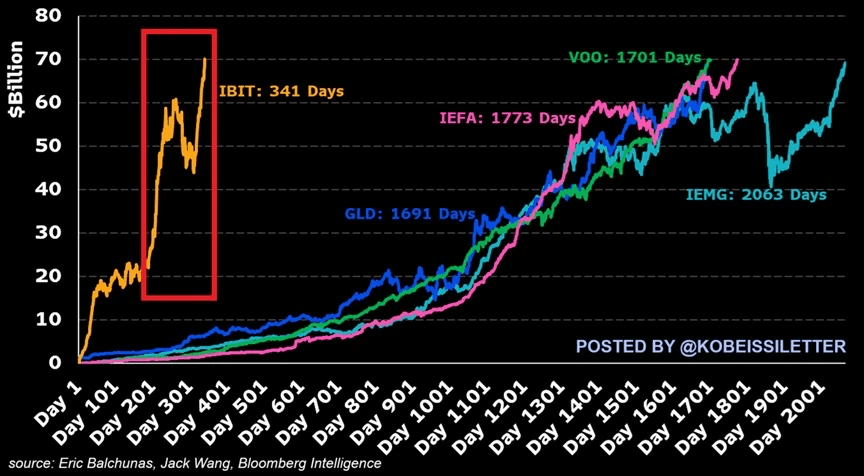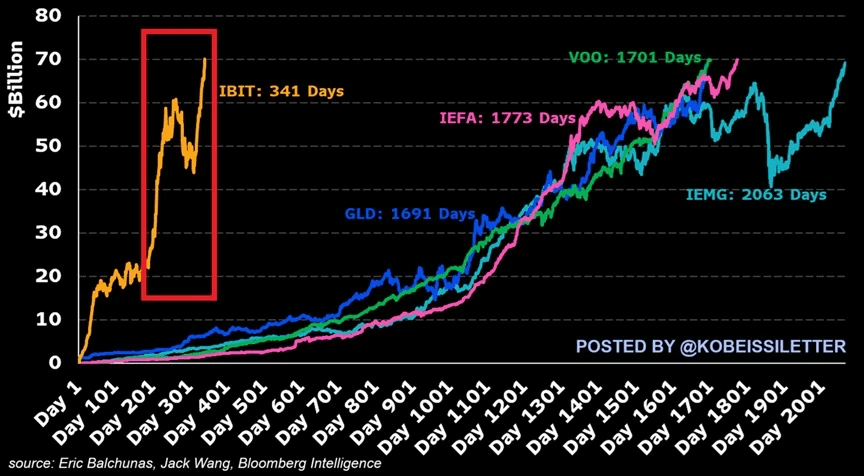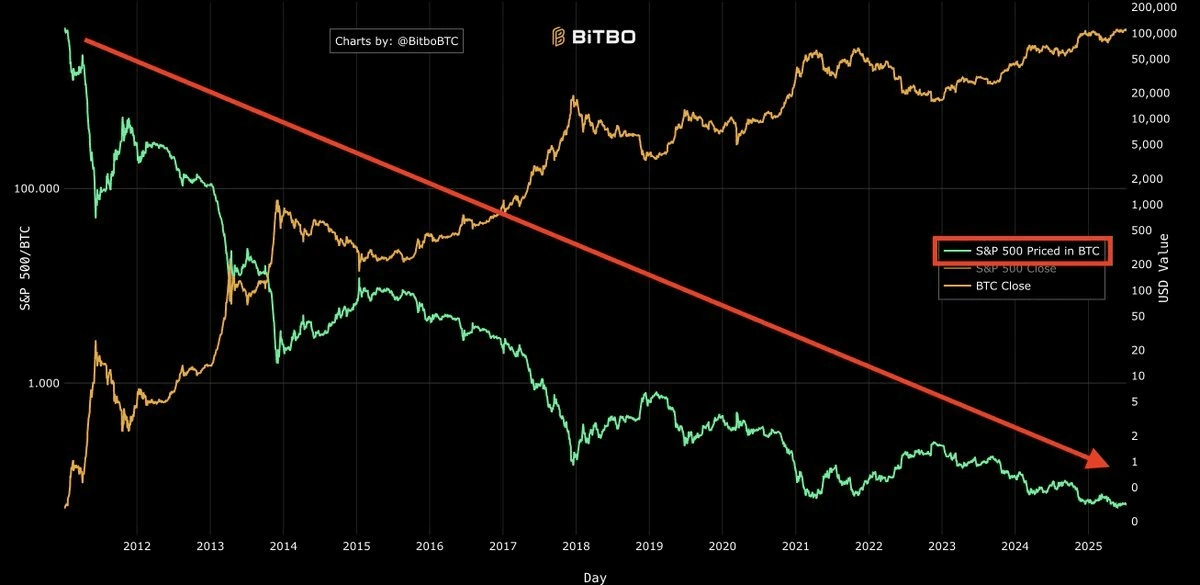Introduction
While Washington's crypto legislation is stalled, Bitcoin has broken historic highs in a 'non-conventional' manner, as the crypto market experiences a frenzy ignited by fiscal deficits, dollar depreciation, and regulatory games. In July 2025, the U.S. House of Representatives unexpectedly blocked crypto legislation, yet Bitcoin's price surged by $15,000 in a month, and Ethereum is bullish among three major institutions. Is this trend a bubble, a hedge, or a signal of power restructuring? This article will decode the hidden connections between cryptocurrencies and the U.S. fiscal deficit, revealing the deeper logic behind capital flows.

I. Market Movements Amid Legislative Deadlock: The 'Independent Market' of Cryptocurrency
On July 14, 2025, the U.S. House of Representatives' procedural vote on three cryptocurrency bills unexpectedly 'flipped' with 196 votes in favor and 223 votes against, with 13 Republican members switching sides, leading to the stagnation of key legislation such as the (GENIUS Act) and (CLARITY Act). This setback is seen as a 'major defeat' for the crypto industry in Washington, but the market's reaction has been entirely opposite:
Bitcoin$BTC : After the passage of the (Big and Beautiful Act) on July 3, the price surged from $105,000 to over $120,000, with a monthly increase exceeding 14%;
Ethereum$ETH : Spot ETF inflows surpassed $900 million, with a holding scale reaching $13 billion, and institutional holdings exceeding those of the Ethereum Foundation;
Related Stocks: The stock price of stablecoin issuer Circle fell 7% in a single day, but Bitcoin mining company MARA Holdings rose against the trend, indicating a concentration of funds toward leading assets.
Contradictory Phenomenon: Legislative obstacles should have dampened market confidence, yet cryptocurrencies have become a safe haven for funds due to their 'crisis attributes'. Behind this is the uncontrolled U.S. fiscal deficit and the wavering trust in the dollar.

II. The Flood of Fiscal Deficits: Where Does Bitcoin's 'Crisis Premium' Come From?
In May 2025, the U.S. monthly fiscal deficit reached $316 billion, the third highest in history. From the beginning of the year to now, the total deficit has surpassed $1.2 trillion, far exceeding the levels of the same period in 2024. Against this backdrop, Bitcoin's surge is not coincidental but a 'vote with feet' against the dollar system:
Deficits and Currency Depreciation:
In the first half of 2025, the dollar index fell from 106 to 98, a depreciation of 11%;
The 10-year U.S. Treasury yield fell from 4.8% to 4.2%, but the real interest rate (after inflation) remains negative, indicating a decline in capital confidence in dollar assets.
Bitcoin's 'Digital Gold' Logic:
Institutional investors view Bitcoin as a tool to hedge against sovereign debt risks. Fidelity and BlackRock's BTC ETF management scale has surpassed $50 billion, with the total global crypto ETF size reaching $1.1 trillion;
Multinational companies like MicroStrategy and Tesla are incorporating Bitcoin into their 'dynamic cash reserves'. 228 listed companies collectively hold 820,000 Bitcoins, with a market value far exceeding their net assets.
Historical Comparison:
After the pandemic in 2020, the U.S. fiscal deficit surged, leading to an 80% increase in gold prices;
In 2025, the increase in Bitcoin's price will coincide with the scale of the deficit, indicating that it is replacing gold as the new generation of crisis assets.

III. Regulatory Game: Can legislative stagnation hinder the mainstreaming of cryptocurrencies?
Despite the House's voting setback, the regulatory framework for the crypto market is quietly taking shape:
Breakthroughs and Controversies of the (GENIUS Act):
The bill aims to provide a regulatory framework for stablecoins and has passed the Senate, but faced conservative opposition for not including a clause to 'prohibit central bank digital currencies (CBDCs)';
Republican leadership admits that 'packaged voting is not feasible', and future legislation may be split, but the Trump administration's determination to push legislation remains unchanged.
Local Regulatory Innovation:
Conservative states like Wyoming have passed the (Digital Assets Act), recognizing the legal status of cryptocurrencies, attracting institutions like Coinbase to establish compliance centers;
New York State has amended the (BitLicense Law), allowing stablecoin issuers to hold USD reserves, providing a compliance path for the industry.
International Competitive Pressure:
The EU is implementing risk-tiered regulation for the (Crypto Assets Market Regulation Bill), while Hong Kong is promoting licensing for mainstream crypto exchanges;
If the U.S. does not establish regulatory rules soon, it may lose its leading position in the crypto sector.
Conclusion: Regulatory uncertainty may cause market volatility in the short term, but in the long term, compliance will attract more institutional funds.

IV. The Era of Ethereum's 'Three Calibers, One System': Institutional Involvement and Ecological Upgrades
While Bitcoin surges, Ethereum is undergoing a structural transformation:
Institutional Strategic Shift:
@SharpLinkGaming purchased a total of 294,000 ETH through Coinbase Prime, with an average holding price of $2,695, realizing a floating profit of over $90 million;
Cathie Wood's analysts published an article emphasizing that Ethereum's 'Privacy + Scalability' route will maintain institutional adoption advantages.
Technological Breakthroughs:
The total locked value of Layer 2 protocols surpassed $43 billion, with the zkRollup track maturing and addressing the high migration costs for developers;
The tokenization scale of real-world assets (RWA) reached $23.8 billion, with BlackRock predicting it will soar to $16 trillion by 2030.
Price Target:
Arthur Hayes calls for an 'ETH $10,000' target price, believing funds will flow from U.S. Treasuries into the crypto market;
Trader Eugene points out that if ETH/BTC breaks the 0.022-0.027 range, it will confirm a structural victory, with a mid-term target of 0.03 (corresponding to ETH $5,200, BTC $130,000).

V. Future Outlook: Can cryptocurrency become the 'cure' for fiscal deficits?
The essence of the current trend is the market's re-evaluation of the credit of the dollar system. Bitcoin's surge mirrors the uncontrolled U.S. fiscal deficit, while Ethereum's ecological upgrade indicates a shift of the crypto market from 'speculation' to 'infrastructure'.
Short-term Risks:
If the House cannot pass legislation before August, the market may face pressure to adjust;
The Trump administration's tariff threats regarding the Russia-Ukraine conflict could trigger turmoil in global trade chains.
Long-term Opportunities:
Amid the normalization of fiscal deficits, cryptocurrencies will become a standard for funds hedging against systemic risks;
Ethereum's integration of RWA and Layer 2 expansion could give rise to trillion-dollar financial application scenarios.
Conclusion: As the traditional financial system sinks into deficits and inflation, cryptocurrencies are reconstructing the global capital landscape as 'crisis winners'. This trend is far from over, and the interplay of regulation, technology, and macro-environment will determine the winners and losers of the next cycle.


